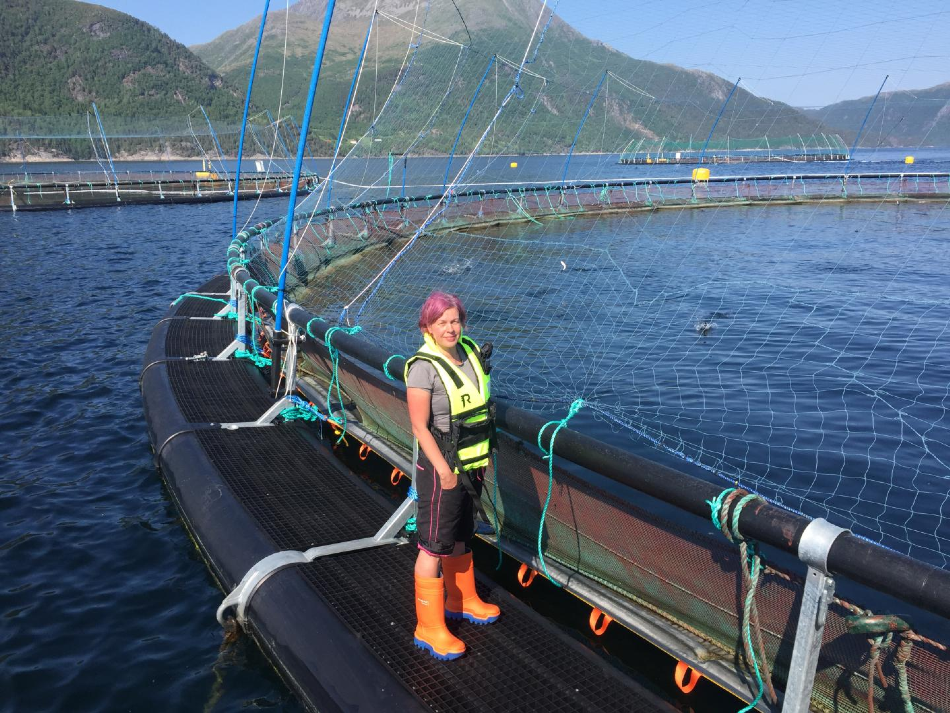Apr 17 2020
It is essential to offer fish the environmental settings in which there is a sufficient amount of food, the stress level is low, and parasites do not affect their health. Sick and stressed fish neither eat nor grow or bring profit to the fish farmer.
 Taltech Professor Maarja Kruusmaa monitoring the progress of the U-CAT fish-robot interaction experiments at SalMar fish farm. Image Credit: Taltech.
Taltech Professor Maarja Kruusmaa monitoring the progress of the U-CAT fish-robot interaction experiments at SalMar fish farm. Image Credit: Taltech.
In order to effectively observe fish in their natural state, a technology is needed, which would enable reaching each nook of the fish farm, where e.g. frightened specimens might be hiding. It must be observed whether the feed reaches all the fish or only the more aggressive alpha specimens, whether the fish have parasites or any other health problems, etc.
Maarja Kruusmaa, Professor and Head, TalTech Center for Biorobotics
Underwater robots or human divers conventionally examine the behavior of fish in a fish cage. The work of divers is costly and fish are mainly afraid of the invader. Therefore, the fish cannot be observed in their natural state by diving. The same challenge is faced while using huge underwater robots.
To overcome this challenge, scientists from Tallinn University of Technology, Estonian University of Life Sciences, Norwegian University of Science and Technology, together with the research organization SINTEF and one of the world’s biggest fish farm companies SalMar, carried out experiments to determine the type of inspection robots that must be employed to observe fish in their natural state.
An investigation of the behavior of fish in the presence of different robots and diver was performed, and it was compared to determine the features crucial for the advancement of robots for highly efficient tracking of animals.
The experiment results revealed that the fish behaved very naturally and calmly when small and slow-moving robot turtle U-CAT, which was created by the scientists of TalTech Biorobotics, was present.
A traditional, commercial underwater robot frightens fish and pushes them to flee quickly. A diver cannot observe the fish close enough underwater. However, the U-CAT robot can reach very close to the fish in the farm and offer a valuable understanding of their state.
Other useful cues were offered by the research for the advancement of robots for observing animals, for example, the ideal color for the robot or the better form of movements.
Robot-human interactions have been investigated for decades, but animal-robot interactions and communication is almost unexplored. However, these studies are of considerable importance: they would inspire advances in environmental monitoring and agriculture automation and would help to build robots facilitating wildlife research.
Maarja Kruusmaa, Professor and Head, TalTech Center for Biorobotics
When compared to wild fishing across the globe, fish farming contributes a larger market share, which is increasing consistently. This includes an industry with a turnover of more than 3 billion dollars at present.
The outcomes of the study were published in the Royal Society Open Science journal in the article titled “Salmon behavioral response to robots in an aquaculture sea cage” on March 11th, 2020.